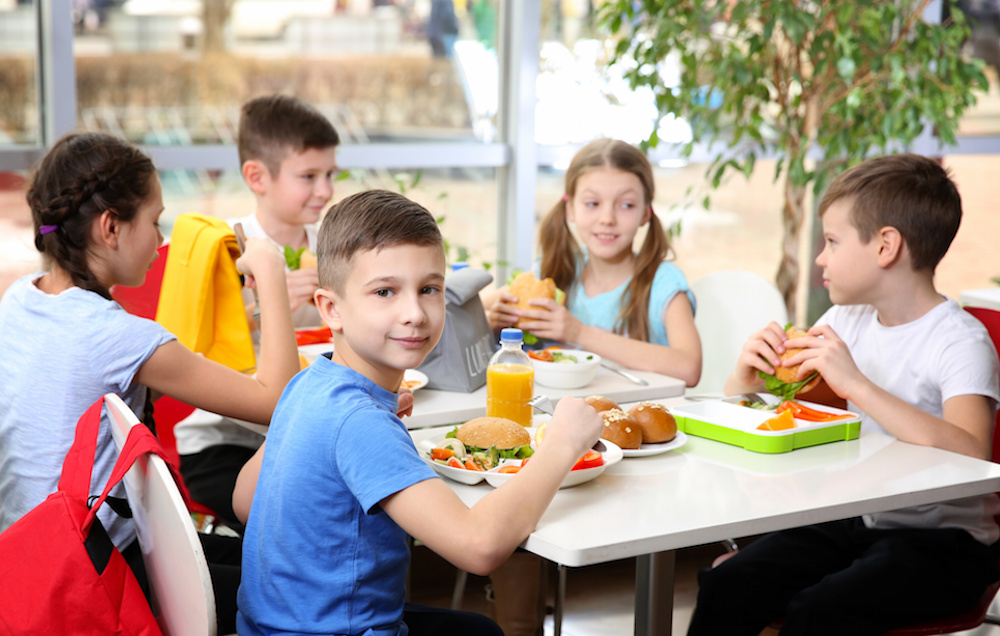High prices plague healthy foods at Australian school canteens

Looking for more reasons to prioritise the provision of easy, accessible, cost-effective healthy canteen items for your students? This information from the Dietitians Association of Australia (DAA) highlights how important it is to make healthy food affordable.
The DAA has released the results of an Australia-wide study of pricing in school canteens, which indicated most schools are selling less healthy, nutrient-poor items at a fraction of the cost of nutritious choices.
The study of 200 government schools across five states found 76 percent of primary schools and 59 percent of secondary schools sold ‘amber/red’ lunch items more cheaply than ‘green’ lunch items – while healthier options were 85c to $1.25 more expensive.
The research, a collaboration between Deakin University and Monash University, was presented at the Dietitians Association of Australia’s National Conference in Hobart, last May.
Accredited practising dietitian, Natassja Billich, says encouraging steps are being made to improve the foods sold in Australia’s school canteens, but price is a key factor standing in the way of further improvements.
Her research found the greatest price differences between healthy and unhealthy items were in schools in disadvantaged areas and rural areas.
Ms Billich reports 92 percent of primary schools in the most disadvantaged areas and 77 percent of secondary schools in rural areas sold ‘amber/red’ lunch items more cheaply than ‘green’ lunch items.
“We want to support kids to make healthy choices at school and we want them to eat more fruit and vegetables, and one way to do this is to close the price gap between the nutritious menu items and the less healthy options.
“Our research found the majority of canteens are selling foods such as meat pies cheaper than salad sandwiches, and in many cases, chips cost less than apples, so there’s still some work to do,” said Ms Billich.
Ideally, Ms Billich would like ‘green’ items, like lean meat and salad sandwiches or stir-fries containing vegetables, to be subsidised as much as possible, so that these foods at least match the price of red items such as hot dogs, meat pies and sausage rolls.
“Canteens can also promote ‘green’ or healthy items by including them in meal deals, making them front and centre at the canteen, and presenting them in enticing ways. This would help school menus become compliant with canteen guidelines and give kids a better chance of making great food choices,” said Ms Billich.
She said the whole school community, with everyone from the principal to the parents, must be on board, supporting canteen managers to make these changes, and that government backing is vital in fostering healthy school canteens.
Dietitians Association of Australia president, Liz Kellet, says school canteens play an important role in supporting healthy eating messages and modelling a healthy food environment for students.
“Many school canteens are working hard to change their menus by offering healthier options and reigning in ‘red’ food items, containing excess kilojoules, saturated fat, added sugar and salt without much nutrition, and we support moves to make healthier menu items cheaper as an important next step,” said Ms Kellett.
According to Australia’s National Healthy School Canteen Guidelines, green or ‘everyday’ items include fresh vegetables and salad, baked beans, wholegrain bread, plain rice and pasta, canteen-made soups that are lower in salt, air-popped popcorn, fresh or canned fruit (in natural juice), low or reduced fat milk, lean beef and chicken, unsalted and unroasted nuts, and eggs.
The most recent ABS National Health Survey found just five per cent of Australian children aged 2 to 18 years met the recommended daily serves of both fruit and vegetables.







